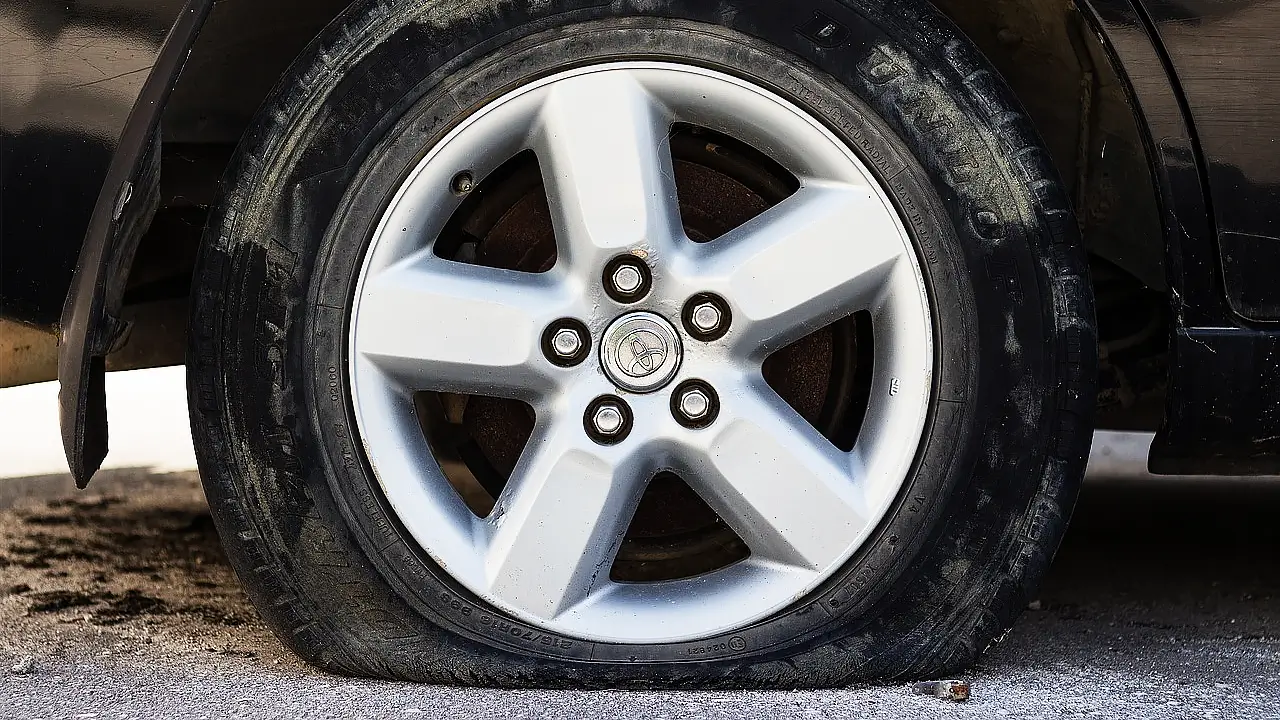Although driving with a punctured tire may seem like a small discomfort, serious risks are involved for both your safety and the general condition of your car. Providing traction, keeping correct contact with the road, and absorbing impact from uneven surfaces are the three main functions of tires, which are essential parts of your vehicle. A burst tire impairs these mechanisms, which may have several harmful effects.
What Really Happens When You Drive with a Punctured Tire?
Immediate Dangers
Losing vehicle control is the most immediate problem when driving on a punctured tire. A punctured tire quickly loses air pressure, which impairs handling and stability. It may become difficult to maintain the car in a straight line as a result of this, causing a visible pull to one side. Skidding is more likely when there is less traction on the road, especially in bad weather like rain or ice. Reduced traction can also affect how well a vehicle brakes, lengthening the stopping distance and making emergency moves more difficult.
Blowouts can also result from driving on a tire that is nearly flat or flat. The tire may overheat as a result of the sidewalls flexing excessively when the tire pressure falls below a certain point. The tire structure may be weakened by this overheating, which could result in an abrupt and disastrous breakdown. Frequently, a blowout causes a sudden loss of control, which makes steering challenging and raises the possibility of accidents. Additionally, the noise and vibration that a damaged tire makes as you drive can be distracting and further risk your safety.
Extended Auto Body Damage
Not only can driving with a punctured tire put your safety in peril, but it may also severely damage your car. When the tire is deflated, the sidewalls are not intended to support the entire weight of the vehicle. Driving on a deflated tire for an extended period might damage or prematurely wear down the sidewalls. Because of this damage, the tire may not be completely restored to a safe condition even after a suitable tire repair or replacement.
Wheel rim tension can also result from a flat tire or a tire that is significantly underinflated. Rim bends or cracks might result from driving on a damaged tire, particularly if you come across holes or debris on the road. Rim damage can require expensive replacements or repairs. Furthermore, the uneven wear on other tires and suspension parts brought on by the misalignment of the wheels due to the tire problem could require more comprehensive and costly repairs.
Effect on Performance and Fuel Efficiency
A burst tire can have a big effect on how fuel-efficient your car is. The rolling resistance of a tire is increased when it is underinflated. This results in increased fuel consumption because the engine must work harder to maintain speed. Driving with a punctured tire is an expensive decision because of the long-term impact of the higher fuel consumption.
There is also the possibility that your car won’t function as well. Reduced tire pressure can have an impact on how your automobile handles overall. The absence of support from the tire may force the car’s suspension system to work harder, which would result in a harder ride and greater damage to the suspension parts. Furthermore, the decreased grip may affect how well your car accelerates and corners, making it more challenging to control and navigate in a variety of driving situations.
Conclusion
In conclusion, there are a lot of risks and possible repercussions when driving with a punctured tire. Immediate risks include decreased traction, heightened blowout danger, and impaired vehicle control. Driving on a defective tire can eventually cause long-term car damage, including rim damage and greater wear on other parts. The effects on overall performance and fuel efficiency also highlight the negative aspects of neglecting a punctured tire. Most significantly, the dangers to one’s safety when operating a vehicle on a damaged tire emphasize how urgently tire problems must be resolved. For your safety and your car’s best functioning, regular maintenance is necessary, including prompt tire replacements or repairs.
- Nearly 30% of UK Drivers Believe Car Tax Should Be Based on Mileage — Survey
- Why Planes and Boats Escaped the Luxury Tax But Cars Didn’t
- Australia’s Headlight Confusion: Authorities Warn Drivers After Viral $250 Headlight Rule Goes Wild Online
- 2025 Hyundai Venue Facelift Launched in India – Full Details, Variants, and Price
- Royal Enfield Bullet 650 Unveiled at EICMA 2025: A Classic Legend Returns
